- Home
- China Miéville
London's Overthrow
London's Overthrow Read online
London’s Overthrow
China Miéville
London’s Overthrow
November – December 2011
SHOVE YOUR HANDS in your pockets and set out. In London in winter it’s nearly pitch at half-past-four. By six, you’re in the night city, and in backstreets you can be alone for a long time.
Some chance conjunction of latitude and climate: in this city artificial light cuts darkness like nowhere else. There are no trees like these, streetlit up, fractal cutouts. When you were a kid you ran through this bluster and raindrops so tiny they were like dust falling in all directions, not just down, and missed it even while you were in it.
There’s been a revolution in remembrance. Digital photography’s democratised the night-shoot. One touch at the end of a sleepy phone call on your way home, you can freeze the halo from streetlamps, the occluded moon, night buses, cocoons shaking through brick cuts, past all-night shops. Right there in your pocket, a lit-up memory of now.
THIS IS AN era of CGI end-times porn, but London’s destructions, dreamed-up and real, started a long time ago. It’s been drowned, ruined by war, overgrown, burned up, split in two, filled with hungry dead. Endlessly emptied.
In the Regency lines of Pimlico is Victorian apocalypse. Where a great prison once was, Tate Britain shows vast, awesome vulgarities, the infernoward-tumbling cities of John Martin, hybrid visionary and spiv. But tucked amid his kitsch nineteenth-century brilliance are stranger imaginings. His older brother Jonathan’s dissident visions were unmediated by John’s showmanship or formal expertise. In 1829, obeying the Godly edict he could hear clearly, Jonathan set York Minster alight and watched it burn. From Bedlam – he did not hang – he saw out his life drawing work after astonishing work of warning and catastrophe. His greatest is here.
Another diagnostic snapshot.
London’s Overthrow. Scrappy, chaotic, inexpert, astounding. Pen-and-ink scrawl of the city shattered under a fusillade from heaven, rampaged through by armies, mobs, strange vengeance. Watching, looming in the burning sky, a lion. It is traumatised and hurt.
The lion is an Emblem too
that England stands but on one Foot
With the urgency of the touched, Martin explains his own metaphors.
and that has lost one Toe
Therefore long it cannot stand
The lion looks out from its apocalypse at the scrag-end of 2011. London, buffeted by economic catastrophe, vastly reconfigured by a sporting jamboree of militarised corporate banality, jostling with social unrest, still reeling from riots. Apocalypse is less a cliché than a truism. This place is pre-something.
30 NOVEMBER. ABOVE the invisible bridge at Blackfriars, red Victorian pilings jutting from the Thames, helicopters dangle like ugly Christmas baubles. They surveil thronging streets. Two million public-sector workers strike today, and tens of thousands of them and their supporters are whooping through central London.
Mary Ezekiel, lifelong Londoner, Highgate by way of Hackney, staff nurse at University College London Hospital, itemises the effects pension cuts, the action’s cause, will have. She flattens down her red t-shirt. Much British tat is emblazoned with the cloying World War II propaganda slogan ‘Keep Calm and Carry On’. ‘Get Angry’, Ezekiel’s shirt demands instead, ‘and Fight Back’. ‘All the speakers have been amazing’, she says. ‘That’s what I feel positive about. I just hope it reaches Mr Cameron’ – she says the Prime Minister’s name disdainfully – ‘in his mansion.’
Cameron first denounced, then dismissed the day’s action. For the Right, strikes are both devilish and pathetic, have both terrible and absolutely no effects.
‘The perils of marching!’ a young woman laughs, pushing banners out of her face. ‘Lashed by flags!’ A thousands-strong sprawl of bobbing cloth and cardboard. The logo of the Society of Radiographers wobbles near placards of the Worker-Communist Party of Iran. Holding up a huge pink triangle, a young Ugandan man, Abbey, says, ‘We are helping gay asylum seekers from all over the world, especially Uganda, Nigeria, Cameroon, Senegal.’ He’s there to support the workers. It’s all linked, he explains. Cuts to social spending, soaring tuition fees, scapegoating.
Another animal watches from above, like the lion, but this one with relish. Sabbas waves an extraordinary papier-mâché dog head. ‘It’s the riot dog,’ he says. ‘Or the riot dogs, because there’s more than one riot dog over there.’
London homage to Athenian animal rebellion. Loukanikos, Kanellos and Louk. Unfazed by tear gas, canine presences at every demonstration against the austerity demanded by those who do not need to be austere. Matter-of-factly, Sabbas translates the dog’s slogan, its injunction to rulers: ‘“Cut your own throat”.’
NOT IN THE manner Jonathan Martin predicted, but the church and its priests – ‘blind Hipacrits, Saarpents and Vipears’ – have been shoved abruptly front and centre of crisis. 15 October: Occupy LSX, one of the world’s proliferating hashtag movements, converges on the financial district that declares itself, in synecdochic presumption, the City of London. Its participants are aiming for Paternoster Square, the stock exchange, to protest those who brought us to this trembling. Entrance, though, is not a right: the square, like great and growing swathes of corporatised London, once public, these days only pretends to be, and that if you ask nicely. Police block entrance. The protestors set up outside, by a convenient next-door cathedral. St Paul’s, Christopher Wren’s post-Great Fire masterpiece. A grassroots response to one cataclysm in the splendid shadow of another to another.
Christ’s authorities dither. In London’s Overthrow, they hold their bibles the wrong way round: in London 2011, they start legal action. Two priests resign from the Cathedral hierarchy. More priestly dithering. The Cathedral closes, muttering about safety. The protestors protest that. Ditheration. St Paul’s opens again. The Archbishop of Canterbury offers careful hedged sympathy for the protestors’ concerns. Litigation is left up to the City of London Corporation, the unique, rich, secretive local authority.
So here is the structure of Occupy Everywhere, by Cheapside, Milton’s birthplace, now an anodyne corporate high street, near Cornhill and Threadneedle Street, hubs of finance. Suited women and men pass the tea tent, the tent university with its whiteboard program of talks, the tent library. Some pause to read the patchwork of signs and cuttings fixed on the canvas and on the pillars of local shops. The Revolution will not be Branded. Don’t Attack Iran. Stop Protecting Bondholders, Let Banks Fail.
An expensively dressed man in his mid-50s blinks and, with immaculate posh politeness, declines a request for an on-record opinion of his new neighbours. He goes back to reading the walls. Financial Justice is a Gospel Imperative.
ADS FIND PLACES to root that aren’t even places. They sprout on the backs of travelcards, the surfaces of the ticket machines that sell them. The fronts of every step out of the Tube, so, rising from the earth, you’re faced with strips of meaningless enthusiasm for product. ‘All about me the red weed clambered among the ruins’. Marketing chokes London as vigorously as Wells’ end-of-the-world Martian flora. Outside Waterloo station, at a bus stop, LoveFilm projects an endless loop of bait-drivel onto a building across the road, so its visions lurch into anamorphic frights on the sides of every bus that passes. And this commercial has a soundtrack. Now, close your eyes, you still can’t opt out.
THE GOSPEL IMPERATIVE is broken.
The pay gap between the highest and lowest paid in the UK has grown faster than in any other developed country, spiking since 2005. In 2008, average income of the top 10 per cent was twelve times that of the lowest. Their riches wax. We others are told to tighten belts. Tax rates for the wealthiest have dropped, even as the gap between the merely rich and the utterly w
ealthy has grown.
One of capitalism’s defences is the outrage-fatigue it engenders.
We’re approaching Victorian levels of inequality, and London’s more unequal than anywhere else in the country. Here, the richest 10 per cent hold two-thirds of all wealth, the poorest half, one-twentieth. A fifth of working residents in the London boroughs of Brent, Newham, Waltham Forest, Barking and Dagenham earn less than a living wage. Unemployment in the city is above 400,000, and rising. Almost a quarter of young Londoners are out of work. A wrenching 40 per cent of London children live in poverty.
The numbers mean death. Travel the grey Jubilee line. Eight stops, east from Westminster to Canning Town. Each stop, local life expectancy goes down a year.
From where you’ve got out, over the river you can see the dome, blister-memento of London’s pathetic millennium.
2011. Stagnation and money cataclysm. Boardroom pay goes up 50 per cent. Still, in London, defenders of privilege aren’t quite so prone to open swagger as their US counterparts. Yes, magazines like Hello and Heat, programs like Made in Chelsea, celebrate conspicuous consumption by celebrities and local gilded youth. Yes, the Financial Times’ How To Spend It supplement, a guide to luxury and chic commodities, is enough to make a placid liberal nostalgic for the guillotine.
But the propaganda never fully took. 1998: Lord Mandelson, New Labour grandee, declares that Labour – that traditionally working-class party – is ‘intensely relaxed about people getting filthy rich’. People, though, refuse to forget that the filthy riches of the filthy rich are not unrelated to the filthy poverty of others. The declaration remained infamous.
Arguments for swollen pay packets among London’s 1 per cent and their apparatchiks tend to have a semi-apologetic, semi-sulky ring: it’s necessity, the global market, the like-it-or-not real world. Not, as might be more common on Wall Street, moral right. Ineluctibility as self-justification: its fans cite the City of London’s strength, its riches, as reason not to target its riches, its strength.
We slump under sado-monetarism. There are other ways. For years Alan Freeman was an economist with the Greater London Authority, working with both mayors. He leans forward in his chair, explaining what’s wrong with London’s still-massive economy, and how to fix it. He bullet points. ‘Build two million homes ... edufare in the place of workfare ... invest in innovation. Quintuple government funding of R&D, extend R&D to the arts ... put growth back and (it’s easy to show) the tax coffers will overflow.’
Statues of dragons punctuate the streets of the City, symbols of the area. Less Beasts of Revelation than priggish, arch draconine bureaucrats, more tetchy than rampant. But they guard gold like Smaug.
CHRISTMAS TIME IN London, lights in all areas. Celebrities, minor to middling, gurn out from posters for pantomimes.
The ultrarich might stick to Chelsea and Belgravia, the wealthy stay out of North Woolwich, but in Stoke Newington, in Kensal Rise rich and poor are up close. Islington, north London, a shorthand, these days, for smug affluence, is also the fifth most deprived borough in the capital, with the second highest child-poverty rate in England, a crime rate double the national average. This is London.
The high street’s in trouble in this economy. Too, Londoners are anxious about a loss of particularity. A tide of commercial entropy tugs shopping precincts towards indistinguishability, pedestrian brandscapes. The city resists somewhat, especially that zone between suburbs and centre, not quite yet worth the big logo beasts’ hungriest attentions. Areas like Balham and Brent, the defining stretches of London, unkempt and irresistible. Here are still the distinct decors of plenty of local shops. Pound stores, crammed cornucopias of bits and pieces and household goods, put their discounted bars of soap and most colourful clothes baskets outside, brooms and mopheads like bunting.
The cheap laundrettes that serve these areas could be portals. The secret of teleportation. Go in past identical 70s-style signs for service washes, in Newham in the east, in Haringey to the north, Lambeth and Lewisham, through the smell of dryers, you enter shared laundretteness, as if you might exit a completely other establishment, in Waltham Forest, Dagenham, Kilburn.
So come out in Kilburn High Road. Here like the street itself, Christmas lights are amiable, vivid and tatty. Shooting stars, little tannenbaums, presents in all colours. It’s similar in Neasden up the road, in Brixton and Stockwell down south. Bunting, robot Santas ho-ho-hoing, lines of business, broken with dead shops, furred with tinsel. There are ghoulshops, of course, here where the unrich live, pawnbrokers and ‘money shops’ for short-term loans.
Businesses are closing uptown too, but on the King’s Road and Knightsbridge, tchotchkes still go for comedically high prices. The only austerity here is aesthetic. The beasts of Bond Street are bird-footed silver egg-cups from Aspreys, fox and hart masks on mannequins unbothered by lights much sleeker and fewer in colour than those in the Kilburn windows.
You can do class analysis of London with Christmas lights. Glance in the gloaming of late December through the front windows of houses. In estates and cheaper dwellings, the season’s celebrated with chromatic surplus. Get smarter, the middle-class occupants strive to distinguish themselves with white-lit Christmas trees.
Ah, good taste, as Picasso may or may not have said, what a dreadful thing. It’s preposterous, this doomed attempt to dekitsch Christmas. Delight inheres in the too-muchness. But class markers have long been excessively important to the English culturati. Now in December, white lights and silver ornaments are seasonal peacock tails, with bleached feathers.
IN 2010, THE Labour Party was pushed out of government, and the Conservatives joined forces with the Liberal Democrats to take power. The conventional, if misleading, transatlantic analogy is that of Labour to the Democrats and the Conservatives to the Republicans. What, then, is the Liberal Democrat Party?
A mooncalf formulation. Fag-end descendent of Whigs, anti-trade-union social democrats, freetraders, social liberals, beachcombing disparate inspirations. The rightward lurch of the Labour Party under Blair allowed the LibDems to accrete a certain sheen. Which tarnished at astounding rate when they became part of the ConDem government – such a pitch-perfect portmanteau – signing up to and off on a Thatcherite agenda, privatisation in the health service, cutting the Education Maintenance Allowance that helped lower-income school students, undermining comprehensive education in state schools by pushing selection, the siphoning off of preferred pupils, creating a zero-sum game among proliferating local schools, attacking any nominal agenda of universalism. Melissa Benn, educationalist, calls the model ‘rigid centralisation with widespread privatisation’. They tore up a promise not to increase university tuition fees. That last in particular helped radicalise a wave of students whose protests in 2010 started the backlash that, with fits and starts, continues.
Today the default demeanour of the LibDem politician is chippy defensiveness, plus/minus shame. Their left wing performs its lachrymosity and discomfort, their rugged pro-marketeers – like Deputy Prime Minister and party leader Nick Clegg – mutter about hard choices. Betrayal as machismo. Once a soi-disant progressive alternative, now they are Tory-enablers.
The economy toilets. Prices rise during a hecatomb of services. Libraries are closing. Social services are slashed. ‘What else’, laments the front page of the Kilburn Times, ‘is left for them to cut?’
There’s strife beyond the public sector. Several days after the strike, electricians working for the construction company Balfour Beatty walk out in protest against aggressive new contracts. People are fighting to stand still, whatever line of work they’re in.
‘There are clients that maybe I don’t particularly like the sound of ... really bossy and pushy,’ Sabina says. ‘Now I’d be more likely to consider clients like that.’ Sabina has been a sex worker in the capital for twenty years. ‘What’s happened in the last, maybe, four or five years is ... that more women are going into prostitution, and also women who left are going back, bec
ause they find it hard to make ends meet ... what are our options? How are we supposed to survive?’
Some troubles are unique, of course, and very serious, for women in this sector. ‘I know two women who’ve been raided, lost their places and are now working outdoors ... that’s a lot more dangerous ... it’s absolutely the last resort. But the raids and the whole kind of crackdown on prostitution are driving women to work on their own.’
Other troubles of these parlous times are more familiar. ‘Petrol costs have gone up. Parking in London is horrendous.’ A universal jeremiad. ‘We sex workers are just like everybody else.’ Sabina speaks with the patience of someone who has explained this many times before. ‘You know, we’re trying to keep ourselves and our families together.’
29 NOVEMBER. STRATFORD, East London, is being reconfigured on a biblical scale, like a Martin doom. From the acres of mud and blue wrappings of the Olympic Park juts the city’s new monument, the ArcelorMittal Orbit, by the artists Anish Kapoor and Cecil Balmond, a vast sculpture of knotting girders like a snarled Gaian hernia. Its name is a corporate grandiosity on the part of its donor, the richest man in Britain. Near it is the stadium, its post-Olympic future a question mark, with bickerings and legal shenanigans ongoing. There’s Zaha Hadid’s aquatic centre, its celebrated lines ruined by temporary seating.
At the southern end of the development site, the walkway is on the path of an old sewer. Oh London, you drama queen. You didn’t have to do that. We watch from the route of effluent.

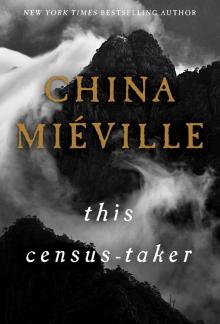 This Census-Taker
This Census-Taker Jack
Jack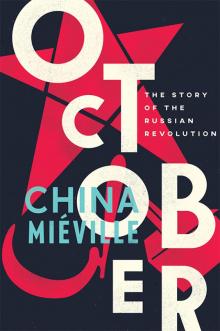 October: The Story of the Russian Revolution
October: The Story of the Russian Revolution The City & the City
The City & the City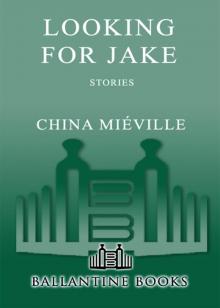 Looking for Jake: Stories
Looking for Jake: Stories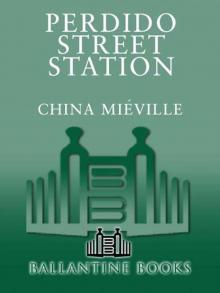 Perdido Street Station
Perdido Street Station Un Lun Dun
Un Lun Dun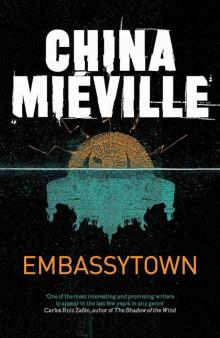 Embassytown
Embassytown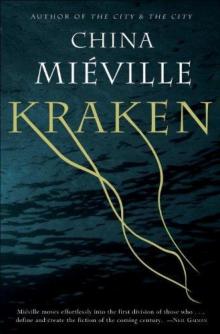 Kraken
Kraken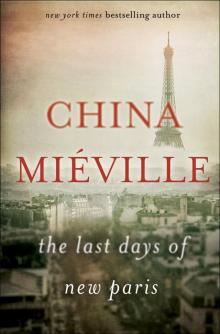 The Last Days of New Paris
The Last Days of New Paris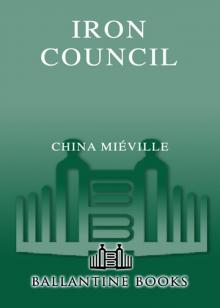 Iron Council
Iron Council King Rat
King Rat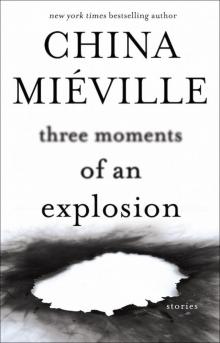 Three Moments of an Explosion
Three Moments of an Explosion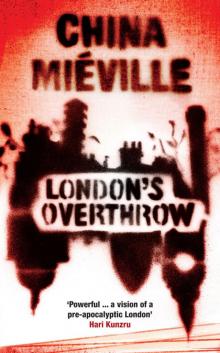 London's Overthrow
London's Overthrow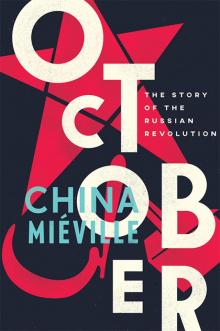 October
October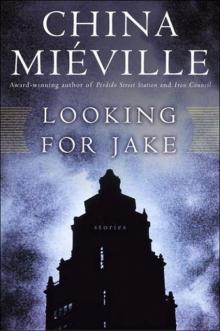 Jack (new crobuzon)
Jack (new crobuzon)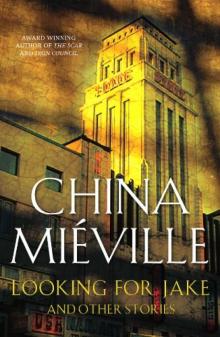 Looking for Jake and Other Stories
Looking for Jake and Other Stories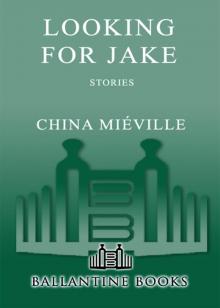 Looking for Jake
Looking for Jake